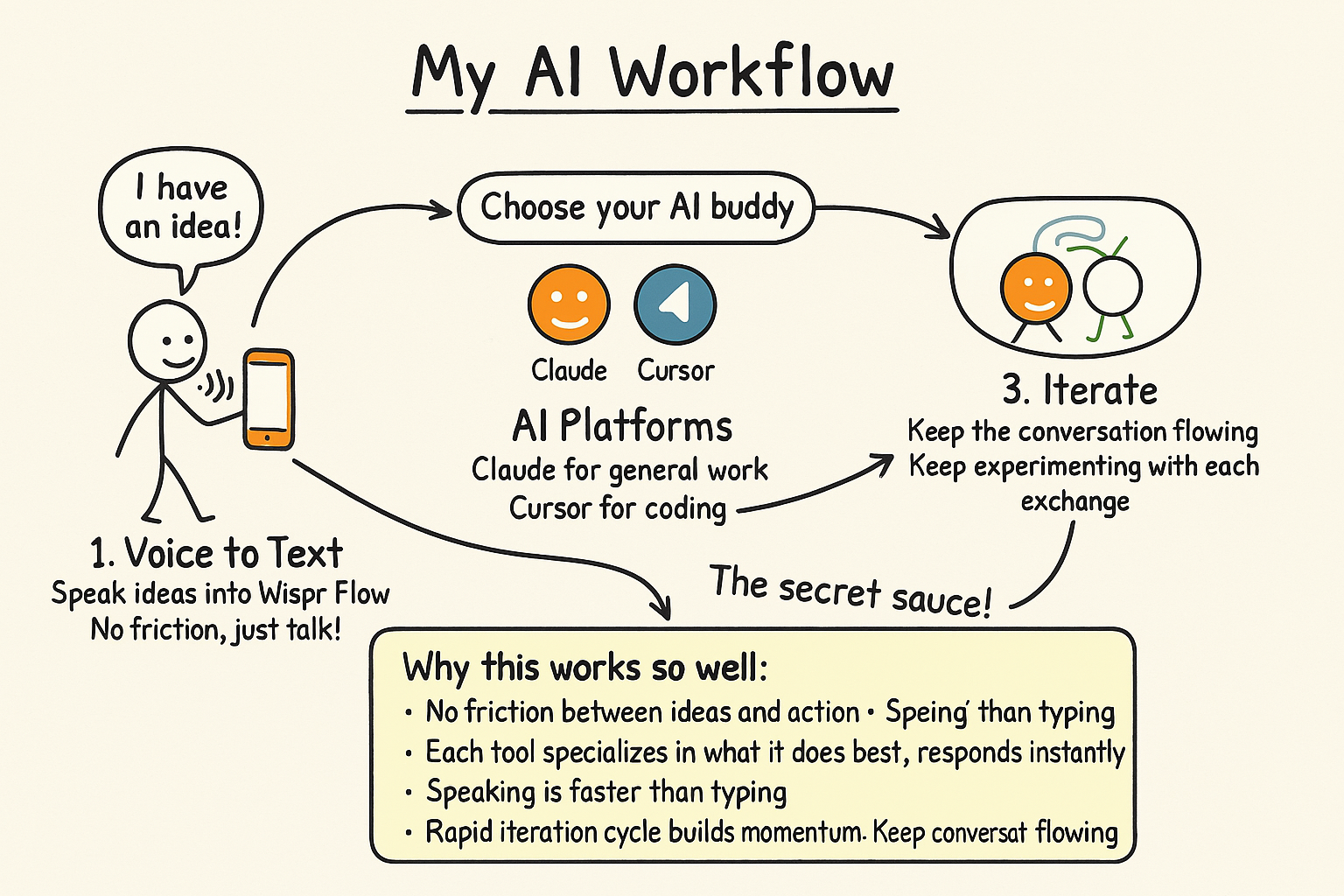From Asking to Building: My AI Transformation Journey
tl;dr: AI transformed my creative process from asking questions to building products. The key turning point was Claude's artifacts feature in summer 2024, which let me create rather than just consume. My advice: minimize friction between idea and prompt, be clear, provide context, don't overthink prompts, and keep iterating. Use voice-to-text to capture ideas quickly, then iterate rapidly with AI.

AI Changed Everything
AI has transformed how I work. What started as curiosity has become central to how I create. Most importantly, it helped me discover what I truly love doing: building, making, creating, researching, and learning. I'll stay up all night building things that previously seemed impossible. AI didn't just change my workflow—it changed what I believe I can make.
The Early Days: Discovery Through ChatGPT
When ChatGPT launched in 2022, I dove in headfirst. I spent late nights testing what it could do. My early prompts were simple: "What is X?" or "How do I do Y?" I was treating a powerful tool like a slightly better search engine.
I didn't realize how much my approach limited what was possible. The potential was there, but I wasn't seeing it yet.
The Artifacts Revolution: From Consuming to Creating
Summer 2024 changed everything when Claude launched artifacts. This wasn't just a new feature—it fundamentally changed how I could use AI.
I could now prompt AI to build complete, functional components rather than just describe them. I remember creating my first visualization and staring at it in disbelief. Something that would have taken me weeks appeared in minutes.
I shifted from asking "Could you help me understand how to code this?" to saying "Build me a component that does X." This wasn't just saving time—it expanded what I could create.
Developing a Personal AI Approach
What I've found most important is minimizing friction between idea and prompt. I used to carefully craft each prompt like a formal document, often spending more time thinking about how to ask than actually asking.
Now I just start. I throw out ideas, get feedback, redirect, and build. The conversation flows naturally. Some of my best work has come from vague concepts that evolved through rapid iteration.
Everyone develops their own style of prompting. Some people are methodical, others more exploratory. Neither is wrong—what matters is finding what works for you.
Fundamentals for Effective AI Interaction
- Be clear about what you want. State your intention upfront: "I need a visualization that shows X" or "Help me create a function that solves Y."
- Provide context. Explain how you'll use the output, what constraints you have, and what you've already tried.
- Ask questions when stuck. Sometimes the best prompt is "How would you approach this?" or "What am I missing here?"
- Don't treat prompts as precious. They're sketches, not final drafts. Revise, discard, or completely change them as needed.
- Keep iterating. Good results rarely come from the first prompt. They come from the fifth or tenth as you refine what you want.
My Ideal AI Workflow

My workflow is simple:
- Start with voice-to-text (Wispr Flow) to capture ideas quickly - speaking removes barriers and lets me describe complex ideas without breaking flow to type
- Send these thoughts directly to Claude for most work, or Cursor for coding - the immediate response gives me something to react to
- Iterate, sometimes evolving an idea through dozens of exchanges in a single session
Looking Forward
The most valuable skill I've developed isn't technical knowledge but the ability to collaborate effectively with AI. I'm no longer asking "What can AI do for me?" but "What can we create together that neither of us could make alone?"
This approach has made building and creating more accessible and enjoyable than I ever thought possible. It's why I'll still be making things at 3 AM, lost in the flow of creation, wondering what we'll build next.